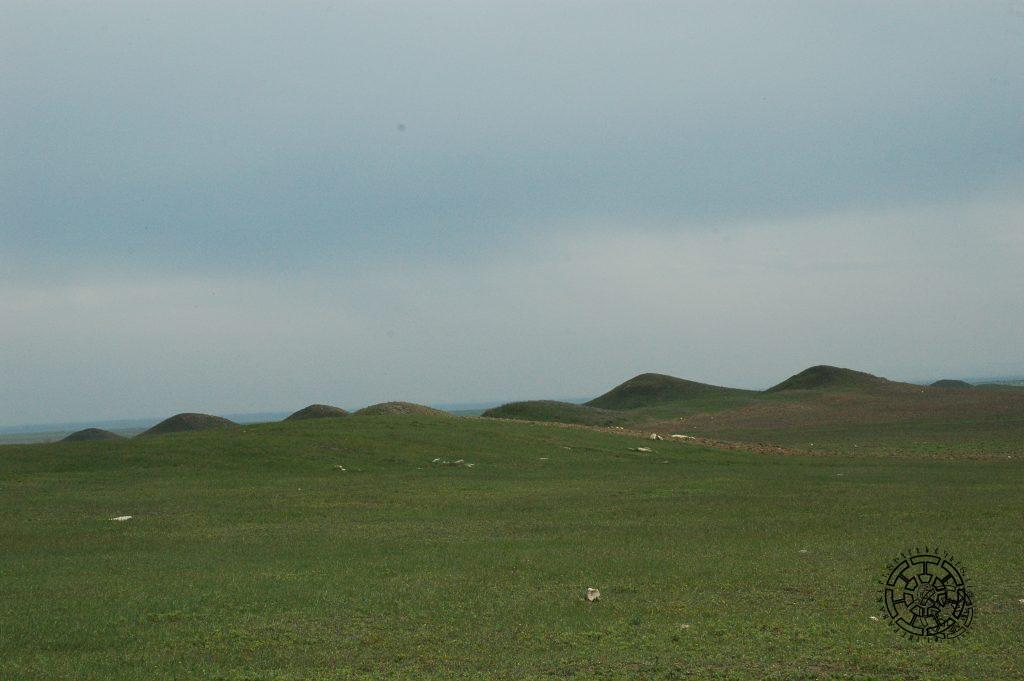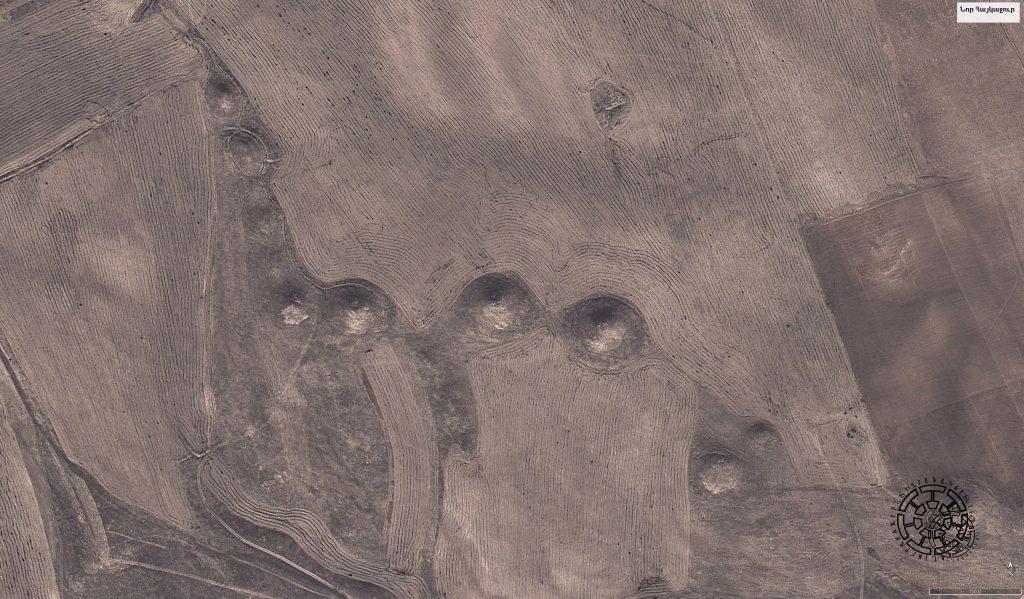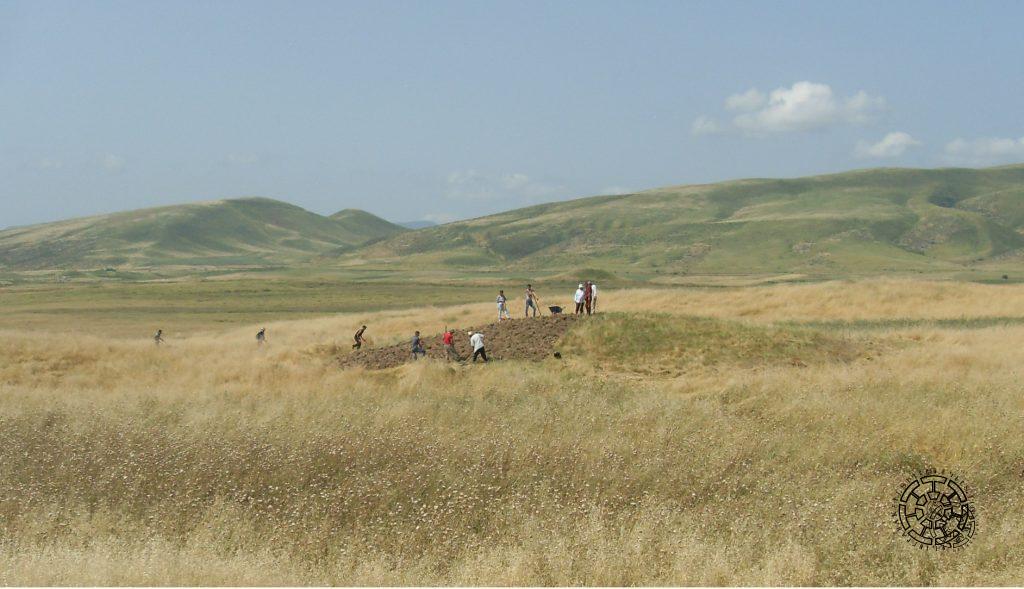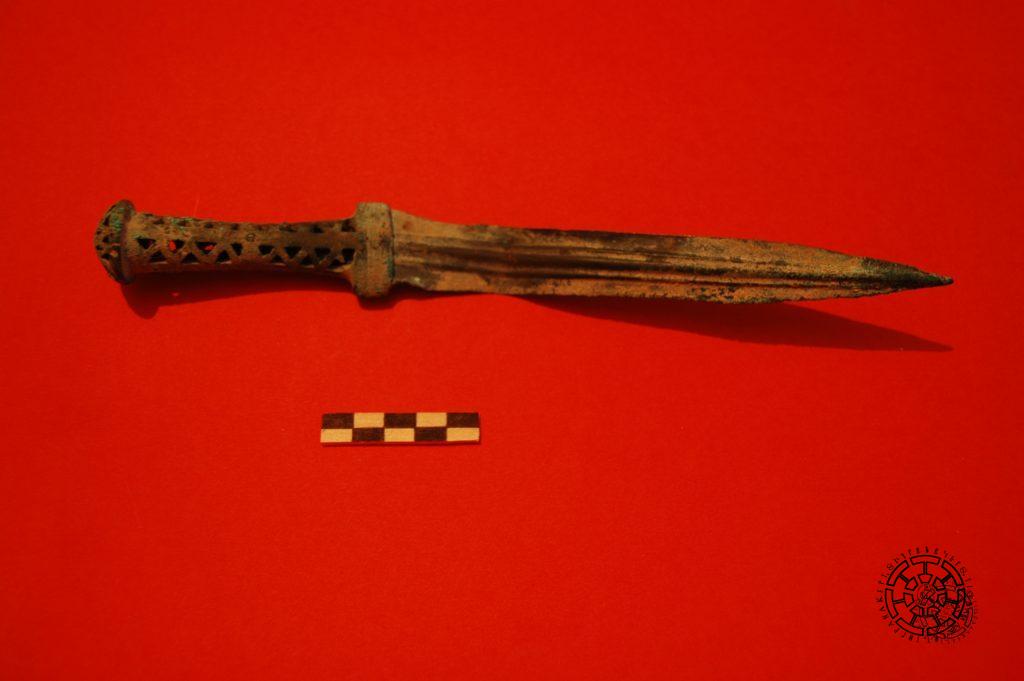Kurgans
On the left bank of Khachenaget, on both sides of the Askeran-Martakert road, there are more than a dozen kurgans (burial mounds, figs. 1, 2). The latter are located in the middle area of Nor Haykajur and Nor Maragha villages, starting from the eastern suburb of Nor Haykajur, stretching to the south about 3-4 km, and ending northeast of Nor Maragha.
These tombs were first identified in the 1920s. S. Ter-Avetisyan, who visited Khachen and Jraberd in the summer of 1924 as a member of the “Scientific Association” attached to the Central Committee of the Transcaucasus, counted tumuli with large mounds in this area. According to him, some of the tombs of varying sizes resemble kurgans found in the South Russian steppes and are attributed to Scythian culture. However, this information regarding the origin and ethno-cultural affiliation of the tombs is preliminary, and a thorough study is needed.
The tombs and their surroundings were first explored in 2005 by the Artsakh archaeological expedition of the National Academy of Sciences of the Republic of Armenia. The expedition confirmed the presence of about two dozen cone-shaped barrows of different sizes, measuring approximately 6-12 meters in height and 40-70 meters in diameter. These barrows are located at almost the same distance from each other. The various archaeological findings predominantly date back to the Early Iron Age, are identical to the materials associated with the “Lchashen-Metsamor” culture, and are estimated to belong to the 11th-9th centuries BC.
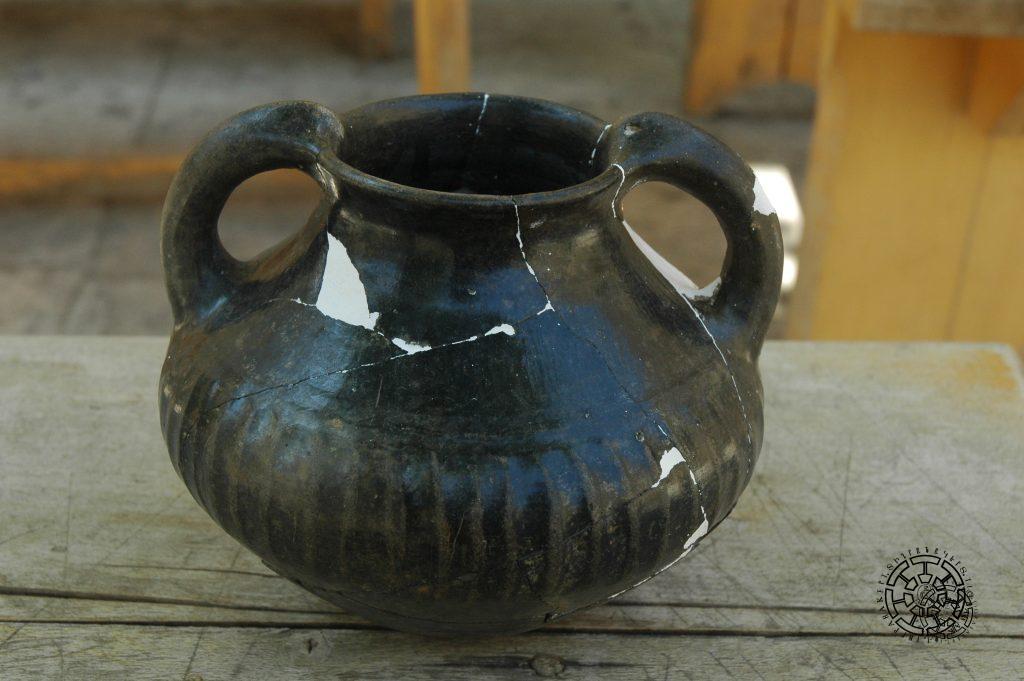
One of these burial mounds was excavated in 2015 by the State Service for the Protection of the Historical Environment of the Republic of Artsakh (Fig. 3). The excavations confirmed a ground burial, which included about two dozen pots, bone objects, bronze arrows, beads, etc. According to the researchers, the tomb dates back to the 9th-8th centuries BC (Fig. 4).
In addition to the mentioned research, various accidental discoveries have been made as a result of agricultural and construction activities around the barrows. These include several complete pots of different shapes, sizes, and colors; one dagger with a reticulate handle, among other items (Fig. 5). Although these findings lack a specific archaeological context, they contribute to our understanding of the environment surrounding the burial mounds and complete the above-mentioned information and chronology.
